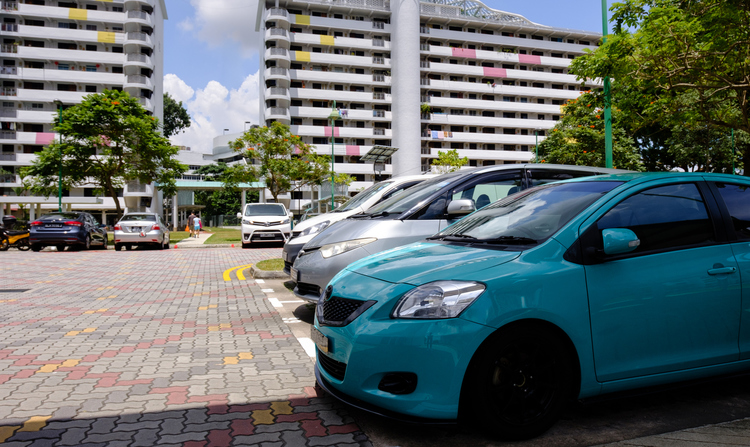The Woes of Car Sharing in Singapore
As the world becomes more eco-conscious, the car becomes ever more demonised. A car-lite concept has been proposed and is increasingly being favoured by the global governments.
But is going car-lite as far fetched of a concept as it seems? Researchers at MIT have worked out that cars spend 95% of their lifespan parked up.
At present, the Singaporean car population will need 1.4 million parking spaces, occupying 2.2% of the total landmass of the little red dot.
These researchers argue that a car-lite, on-demand car-sharing model can reduce the total car population, and the associated infrastructure to support said vehicles, by up to 90%, freeing up space that could be better used for other developments.
The Pros Of Car-Sharing
 Tribecar is the many companies in Singapore offering car-sharing services!
Tribecar is the many companies in Singapore offering car-sharing services!
We reviewed their services here!
Going car-lite means many will have to give up their personal vehicles and find alternate modes of transport for their commutes. But if you’re already used to the convenience and the personal space afforded by your own vehicle, public transport can be a rude shock, especially during rush hours.
Spend any amount of time at Bishan or Serangoon MRT stations during peak periods and you’ll understand the pain of having to jostle for position just for the right to be on the platforms to catch your trains.
Car sharing means that you can still enjoy your personal space, as you are still driving yourself to work. Again, as you are in a car, your commute will be significantly shorter than if you were to use public transport.
Also, instead of your own car clogging up precious parking in the CBD, these shared cars can then be assessed by the next user and driven off. If planned properly as per the simulations done in the research above, we’d only need 189,000 parking spaces islandwide, compared to the 1.4 million we have today.
Car-Sharing Models
 There are 2 models of on-demand car sharing in Singapore. The preferred model, with a lower cost of set-up, is for Point A to Point A rentals. This means you return the vehicle to the original location you pick the car up from. These services are designed for users to run errands, or perhaps even do a full-day rental for a day out with family.
There are 2 models of on-demand car sharing in Singapore. The preferred model, with a lower cost of set-up, is for Point A to Point A rentals. This means you return the vehicle to the original location you pick the car up from. These services are designed for users to run errands, or perhaps even do a full-day rental for a day out with family.
Point A to Point B rentals is less common, as they require a greater inlay of funds for infrastructure. This is a more practical model for commute purposes though, as you can unlock a car at your start point and return the vehicle to your final destination.
The Cost
 To put it succinctly, if you use these services more than twice a day, you’d probably be better off buying your own car. The average commuter spends 30 minutes on the roads driving to work. This means 60 minutes behind the wheel daily.
To put it succinctly, if you use these services more than twice a day, you’d probably be better off buying your own car. The average commuter spends 30 minutes on the roads driving to work. This means 60 minutes behind the wheel daily.
If we use the rental rates from a popular car-sharing service, of $0.36 per minute, you’d get $700 a month, sans the membership fees. Mind you, this is purely for work commutes – add up the trips you’d do for entertainment or for running errands, and that figure can easily climb to close to S$1,000.
The Frustrating Bits
With the money you are spending on these services, you would have expected better service and a more painless overall user experience. There are pros to using the service of course, but there are some big cons too. They are as follows:
Car Availability
 (Photo Credit: Wikipedia)
(Photo Credit: Wikipedia)
There is no guarantee that a car will be available when you need it to be. Most companies will allow you to prebook cars to ensure you’ll have a ride, though, on a whim, cars may not be where you need them to be.
This is especially true if you try to book a car anywhere in the city after dinner time. As car-sharing relies on an organic flow of vehicles to and from the respective stations, it depends on consumers driving the cars into the city for dinner and relies on users using them to head home afterwards.
Sometimes, you may have to walk across the CBD to access a car. But even so, you may not be able to use said vehicle. The older, technology-enabled on-demand car-sharing services are now close to half a decade old.
Rentals do not have the easiest life – they have been subjected to many traffic light Grand Prixs that can knacker their driveline. Mechanical issues aside, bodywork and interior damage can also make these cars unpleasant to use, or perhaps even downright dangerous!
Malfunctioning Equipment

This is really only applicable to the docked car-sharing systems. With age, the stations themselves are starting to malfunction. Faulty screens can make it difficult for you to see what you’re pressing on, increasing the likelihood of falsely cancelling your reservation.
Successfully unlocking the car in the system is only one part of the equation. The station may fail to send a signal to physically unlock the car, locking you out of a vehicle you’ve already started paying rental for. If you did manage to hop into the car, the application may not let you drive it off, opting to cancel your reservation due to an abnormality in the system, leaving you stranded.
To a lesser degree, these hiccups can also occur in app-based car-sharing systems.
Lot Availability
 This is another problem unique to the docked system. Your destination may lack a return point for the car that you’re in. This inadequacy of the system can be a physical lack of a terminal, or there could be one, but all available parking spaces are occupied.
This is another problem unique to the docked system. Your destination may lack a return point for the car that you’re in. This inadequacy of the system can be a physical lack of a terminal, or there could be one, but all available parking spaces are occupied.
In either case, you’ll have to find alternative parking close by to your original destination and complete the last bit of your commute on foot. This whole on foot malarky is a very real proposition when it comes to these shared cars; common as the docks are, there are still areas that do not have return points (such as in Orchard Road!). If you are headed there, unless you have buffered in extra travel time, you’re better off using ride-share or public transport.
Insurance Liability
 You can also be at risk of being billed damages that you didn’t do. There is no shortage of stories from all the user groups on various social media platforms on users being billed for bumps and scrapes, tyre blowouts and even mechanical failures.
You can also be at risk of being billed damages that you didn’t do. There is no shortage of stories from all the user groups on various social media platforms on users being billed for bumps and scrapes, tyre blowouts and even mechanical failures.
In an accident, these companies will insist you go through the insurance route, even if there isn’t any major damage to the vehicles. Excess is one thing – paying thousands upfront for their insurance to start the repair works may not be feasible for all of us, but as their vendors control the final repair costs, there’s no guarantee that you’ll ever get your excess sum back. That is even if the damage is fairly minor to begin with!
All Things Considered…
If a car-lite future is a dystopian one that you’d like no part of, perhaps think of car-sharing as a way of easing into a new way of life. You still get the perks of car ownership, sans the cost, and the hassle of having to get the car serviced and maintained.
As you are only paying for what you use, occasional users will save a chunk of change over actually owning a vehicle. Though having said that, heavy users may be better off with their own vehicles.
Other factors should be considered before you sell your personal car to use car-sharing too. Lack of a reliable fleet could be one – you always need to have a Plan B if you rely on car-sharing in the event you are unable to gain access to one.
You may be also charged for damage you may not have done, something that your private car insurance would have covered if you had a car to call your own!
I want to find the highest selling price for my car within 24 hours!
Read More: Car Servicing: Dos & Don’ts When Speaking to Your Mechanic
Download the new Motorist App now. Designed by drivers for drivers, this all-in-one app lets you receive the latest traffic updates, gives you access to live traffic cameras, and helps you manage LTA and vehicle matters.
Did you know we have a Motorist Telegram Channel? Created exclusively for drivers and car owners in Singapore, you can get instant info about our latest promotions, articles, tips & hacks, or simply chat with the Motorist Team and fellow drivers.


